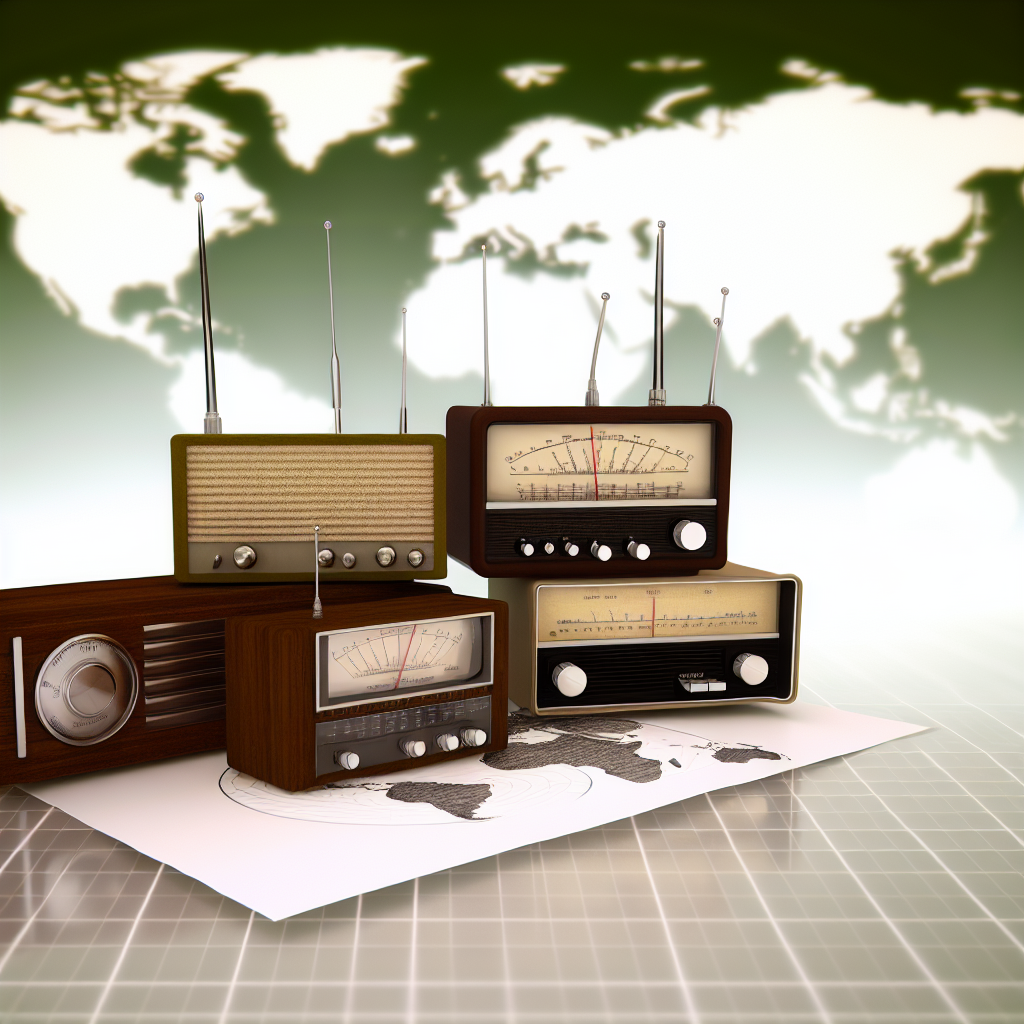Shortwave radio has been pivotal in global communication, serving as a medium for international broadcasts, emergency communication, and a treasured hobby for enthusiasts. These radios leverage the unique propagation characteristics of high-frequency waves, allowing communication over vast distances. Shortwave radio continues to evolve, adapting to both vintage enthusiasts and modern technological trends.
The Basics of Shortwave and HF Radios
Shortwave and HF radios operate within the high-frequency (HF) band, spanning 3 to 30 MHz. This range is divided into several radio frequency bands, enabling diverse applications from amateur radio to international broadcasts. The radio spectrum encompasses all electromagnetic frequencies, and shortwave frequencies are particularly adept at reflecting off the ionosphere, facilitating long-distance communication, which has historical significance since the early 20th century. Today, shortwave radios continue to be vital for global news dissemination, emergency communication, and rural connectivity. Popular models like the Grundig and Tecsun PL-880 exemplify both analog and digital advantages, meeting modern listener needs while preserving historical techniques.
Antenna Tuning and Radio Propagation
Antenna tuning is a critical aspect of shortwave radio communication, impacting the effectiveness of signal reception and transmission. Proper tuning conforms the antenna to the desired frequency band, optimizing performance by minimizing signal loss. The efficiency of an antenna varies with frequency; thus, understanding the relationship between antenna size and the wavelength is key.
Radio propagation, the manner in which radio waves travel, facilitates long-distance communication, often influenced by atmospheric conditions, time of day, and the sun’s solar activity. This phenomenon allows signals to bounce off the ionosphere, extending their range. Knowledge of these elements enhances amateur and emergency communications, vital for rural areas and disaster preparedness.
Shortwave Radios: From Analog to Digital
Shortwave radios have evolved dramatically, transitioning from vintage analog models to advanced digital shortwave receivers. Renowned for their robustness, older models like the **Grundig** line and the **Sony ICF-SW7600** exemplify early craftsmanship, offering rich sound and reliable signal reception. Meanwhile, contemporary devices such as the **Tecsun PL-880** showcase innovations in signal processing and compact designs. The emergence of **Software Defined Radio (SDR)** technology has revolutionized shortwave listening by allowing users to manipulate frequency bands digitally. This shift not only enhances audio fidelity but also improves tuning capabilities, paving the way for a new generation of enthusiasts and global broadcasts.
The Role of Shortwave Radio in Emergency Communication
Shortwave radio serves a critical role in emergency communication, particularly in disaster preparedness and survival scenarios. In times of crisis, when conventional communication networks may fail, shortwave radio offers reliable options for voice and data transmission over vast distances. Its ability to reach rural and remote areas makes it invaluable for communities where traditional infrastructure is lacking. Devices like portable shortwave radios, including models from Tecsun and Sony, are essential for accessing international news broadcasts and vital information. Furthermore, amateur radio operators, or “ham” radio enthusiasts, can provide lifelines during emergencies, enabling message relay and coordination within affected regions.
Engaging in the Radio Hobby: DXing and Shortwave Listening
Engaging in shortwave listening and DXing has captivated enthusiasts for decades, offering a unique gateway into a vast audio tapestry. DXing—short for distance listening—enables hobbyists to seek out signals from distant stations, unlocking global conversations and cultural exchanges. The thrill of capturing elusive broadcasts relies on astute antenna tuning and an understanding of radio propagation, with listeners employing devices ranging from vintage shortwave radios to modern SDRs. Brands like Grundig, Tecsun PL-880, and Sony ICF-SW7600 stand as favorites among collectors and casual users alike. In this vibrant community, sharing tips, documenting frequencies, and celebrating successful receptions fosters camaraderie, enriching the overall experience of the shortwave radio hobby.
Parting Words
Shortwave radio, while often seen as a relic of the past, remains a crucial tool and interest for enthusiasts worldwide. Its unique ability to communicate across continents without reliance on modern infrastructure ensures its relevance. As technology evolves, so too does shortwave radio, continuing to find its place in emergency communication, global broadcasting, and passionate hobbyists’ hearts.

Leave a Reply
You must be logged in to post a comment.